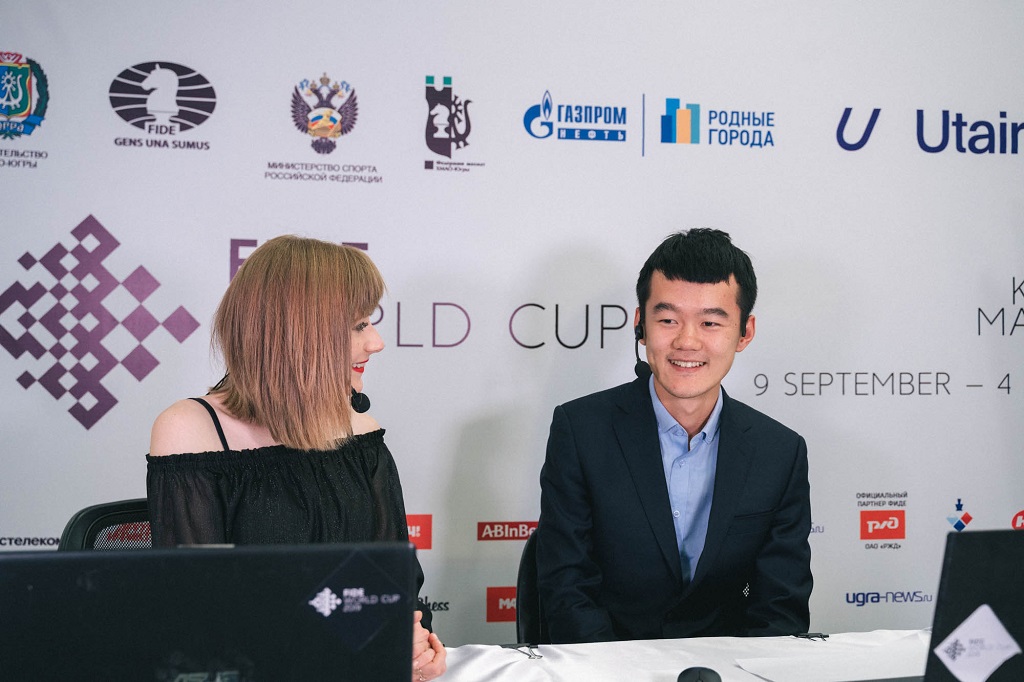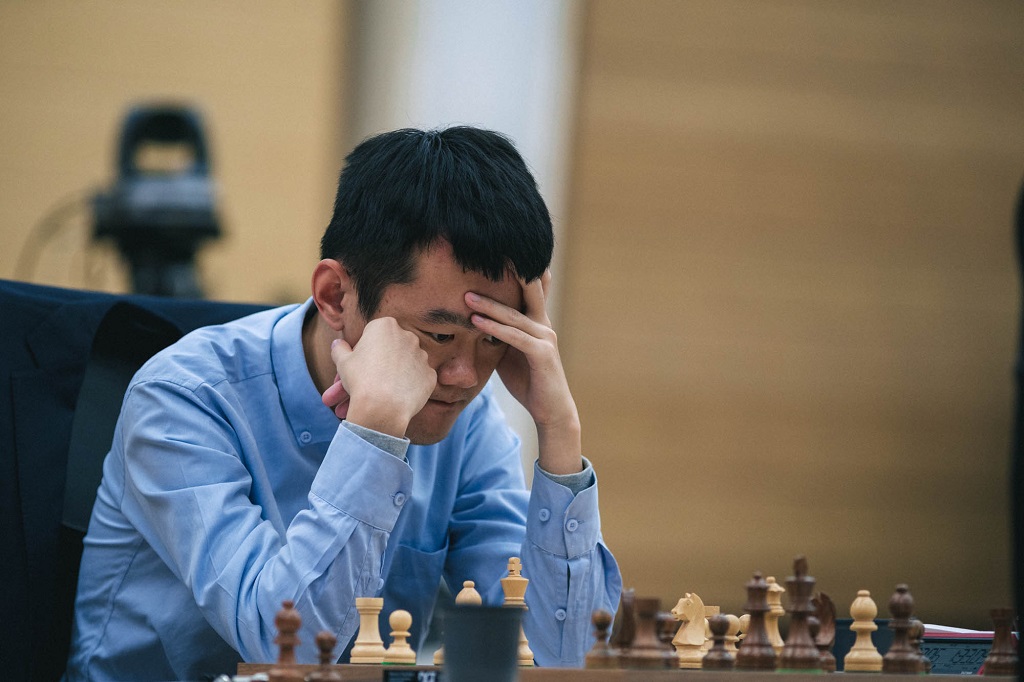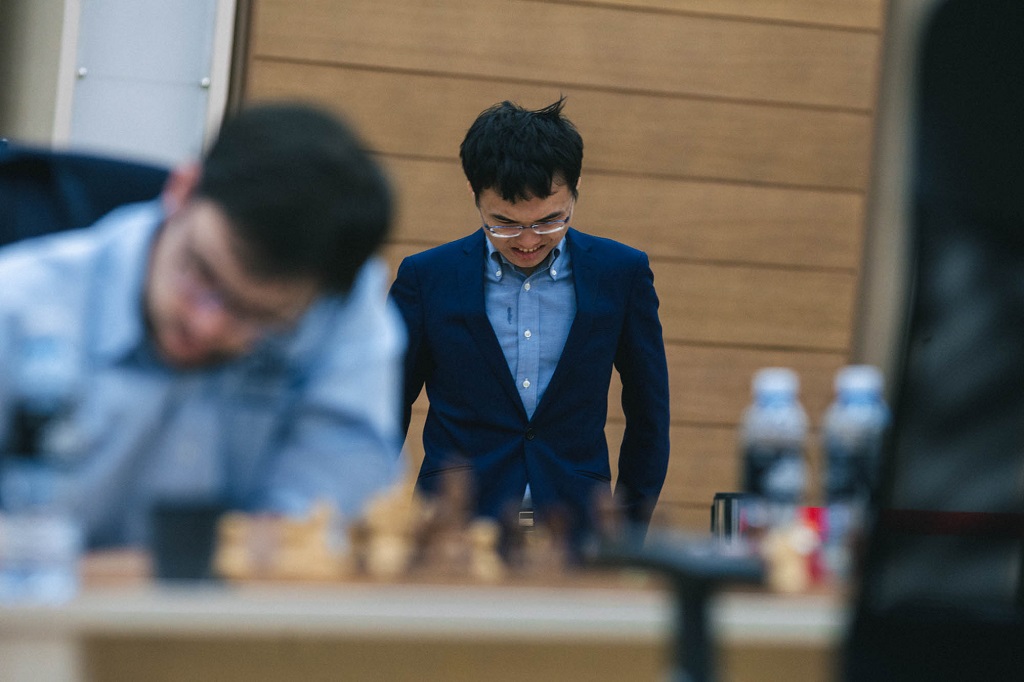


ChessBase 17 - Mega package - Edition 2024
It is the program of choice for anyone who loves the game and wants to know more about it. Start your personal success story with ChessBase and enjoy the game even more.
 The FIDE World Cup is taking place in Khanty-Mansiysk. It is a seven-round knock-out event for 128 players, with a total prize fund of US$ 1.6 million and a first prize of US$ 110,000. The matches consist of two classical games with a time control of 90 minutes for 40 moves plus 30 minutes for the rest of the game, with an increment of 30 seconds per move. The finals consist of four classical games. Full schedule.
The FIDE World Cup is taking place in Khanty-Mansiysk. It is a seven-round knock-out event for 128 players, with a total prize fund of US$ 1.6 million and a first prize of US$ 110,000. The matches consist of two classical games with a time control of 90 minutes for 40 moves plus 30 minutes for the rest of the game, with an increment of 30 seconds per move. The finals consist of four classical games. Full schedule.
Quietly, true to his nature, Ding Liren has gained the respect of all the chess community. This year, the world number 3 was a permanent feature in the strongest events around the world, and showed he has what it takes to get consistent positive results against the elite. These are his results so far in 2019:
| Tournament | Score | Place |
| Tata Steel Masters | 7½ / 13 | s. 3rd |
| Shamkir Chess | 5 / 9 | s. 2nd |
| Shenzhen Masters | 5½ / 10 | 3rd |
| Abidjan GCT | 18½ / 36 | 5th |
| Lindores Abbey | 3 / 6 | s. 2nd |
| Altibox Norway Chess | 8½ / 18 | 6th |
| Prague / Ding v Navara | 7 / 10 | 1st |
| Zagreb GCT | 5½ / 11 | s. 5th |
| St. Louis Rapid & Blitz | 21½ / 36 | s. 2nd |
| Sinquefield Cup | 6½ / 11 | s. 1st |
*s. = shared
The 26-year-old from Wenzhou has also been showing consistency across different formats, as he is currently 3rd, 5th and 2nd in the world rankings in classical, rapid and blitz, respectively. His rise to the very top was steady and unwavering, and included a 100-game unbeaten streak from August 2017 to November 2018 — the run was spoiled in Shenzhen by none other than Maxime Vachier-Lagrave.
In the second game of the World Cup final, he had the white pieces and gifted his country a win on National Day, as China celebrated its 70th anniversary on October 1st.
Ding only needs two more draws to collect a memorable victory and a first prize that amounts to USD 110,000. Moreover, even if he does not get first place this week, not to consider him as a serious challenger to become Magnus Carlsen's successor as world champion would be a grave misjudgement.

Ding Liren hard at work | Photo: FIDE
Despite the fact that Teimour Radjabov has made himself known for being a solid player and drawing most of his games — for example, he has drawn 42 out of the 46 games he has played throughout five editions of the Gashimov Memorial — we cannot blame him for using a timid strategy in this game. He opted for a provocative line of the English, rarely seen at the very to but often played amongst amateurs and non-elite professionals.
In said line, White gives up a pawn as early as move 7 but gets a strong initiative against the undeveloped black army — Black loses a couple of tempi going back and forth with his kingside knight (1...♞f6, 4...♞g8, 11...♞e7). The finalists followed fourteen moves of theory before needing to take their time to find the right way to continue:
The first DVD deals with the initial phase of the game, when the all the reigning principles can be crystalized into just one: DEVELOPMENT!
Ding mentioned afterwards that he had analysed this line a while ago and was not sure whether he was supposed to play 15.♕xe7+ or 15.0-0-0 here — eventually, he decided to castle long. After spending almost 8 minutes on that decision, the Chinese star gladly realized that his opponent seemed to be out of book at this point, as Radjabov thought for 16 minutes before continuing with 15...d6.
After 16.♕a3 0-0 Ding kept playing in the spirit of the position by advancing on the kingside with 17.g4 ♞h6 18.♖g1 ♞f7 19.f4 ♝d7 20.h4 a5 21.g5:
Black is still a pawn up, but his pieces are completely cramped in his own camp. White, on the other hand, is planning to transfer a rook to e1 in order to play ♘d5, besides of course the simple plan of co-ordinating a direct attack against the king. There followed 21...♚h8 22.♕b3 ♜fc8 23.♔b1, and now came Radjabov's crucial mistake:
When Anna Rudolf asked Ding if he had seen some saving line for Black here, the Chinese explained how his plans against 23...a4 maintained a large advantage for White, while Radjabov's 23...e5 seemed to be the only way to go — "I realized he didn't have another move instead of ...e5", he declared mildly.
What followed after 24.♘d5 was a masterful demonstration of how to handle a positionally superior position. Ding was particularly proud of his 29th move:
Master Class Vol. 12: Viswanathan Anand
This DVD allows you to learn from the example of one of the best players in the history of chess and from the explanations of the authors how to successfully organise your games strategically, consequently how to keep your opponent permanently under press
Most of us would probably choose to go forward with 29.♘c7 or 29.h5 — both correct alternatives, given White's large advantage — but Ding found the optimal 29.♘e3, further restricting Black's play. Radjabov was all but doomed after 29...♞d4 30.♗xd4 exd4 31.♘xf5 ♛xf5 32.♗d5.
The Azeri grandmaster kept fighting, but found himself forced to resign after the following sequence:
White has just pushed his pawn to h6. If Black captures with 39...♞xh6, White has 40.♖e1 and the black queen cannot capture with 40...♛xe1 due to 41.♕xf6#. Radjabov played 39...♞e3 instead and resigned after 40.♖Re1, as Black cannot go for 40...♞xd5 (attacking the queen) 41.cxd5 ♛xe1 due to 42.♕xf6+ ♚g8 43.♕g7#.
Certainly an impressive victory by the Chinese grandmaster.
Chinese players are well-known Petroff Defence experts, with Wang Yue one of the main advocates during his time in the elite. Yu Yangyi once again showed he is not the exception to the rule, as he was the first one to deviate from theory on move 11:
My best games in the Petroff Defence
Alexei Shirov continues the successful and highly praised series of his best games. Since many players look on the Russian Defence with the suspicion that it is a drawish opening, and one which at the same time is both dry and boring, Shirov has in this DVD set himself the specific task of countering this view of matters.
11...♝d7 had been played in previous games, while Yu's 11...♝g4 is the first suggestion of the computer. Vachier-Lagrave proved he also knew what he was doing though, and the game continued 12.♕e2 a6 13.h3:
The Frenchman later declared that he had underestimated Yu's retreat with 13...♝d7, and after 14.g4 ♝f8 he played the clever 15.♕f1 but could not quite gain much traction with his subsequent kingside expansion (he eventually played 19.f4). Furthermore, by move 30, four bishops and six pawns per side in a closed structure meant a draw was the natural outcome of a well-played game between two strong grandmasters.

It's been a long ride for Yu Yangyi and Maxime Vachier-Lagrave | Photo: FIDE
The Vienna Variation - a reliable and ambitious weapon against 1.d4
The Vienna Variation is a particular and independent system of the Queen's Gambit. It arises after 1.d4 d5 2.c4 e6 3.Nf3 Nf6 4.Nc3 dxc4, when Black's capture on move 4 is strongly reminiscent of the Queen's Gambit Accepted.
GM Yannick Pelletier reviewed the highlights of the day's action
Commentary by IM Anna Rudolf and GM Evgeny Miroshnichenko